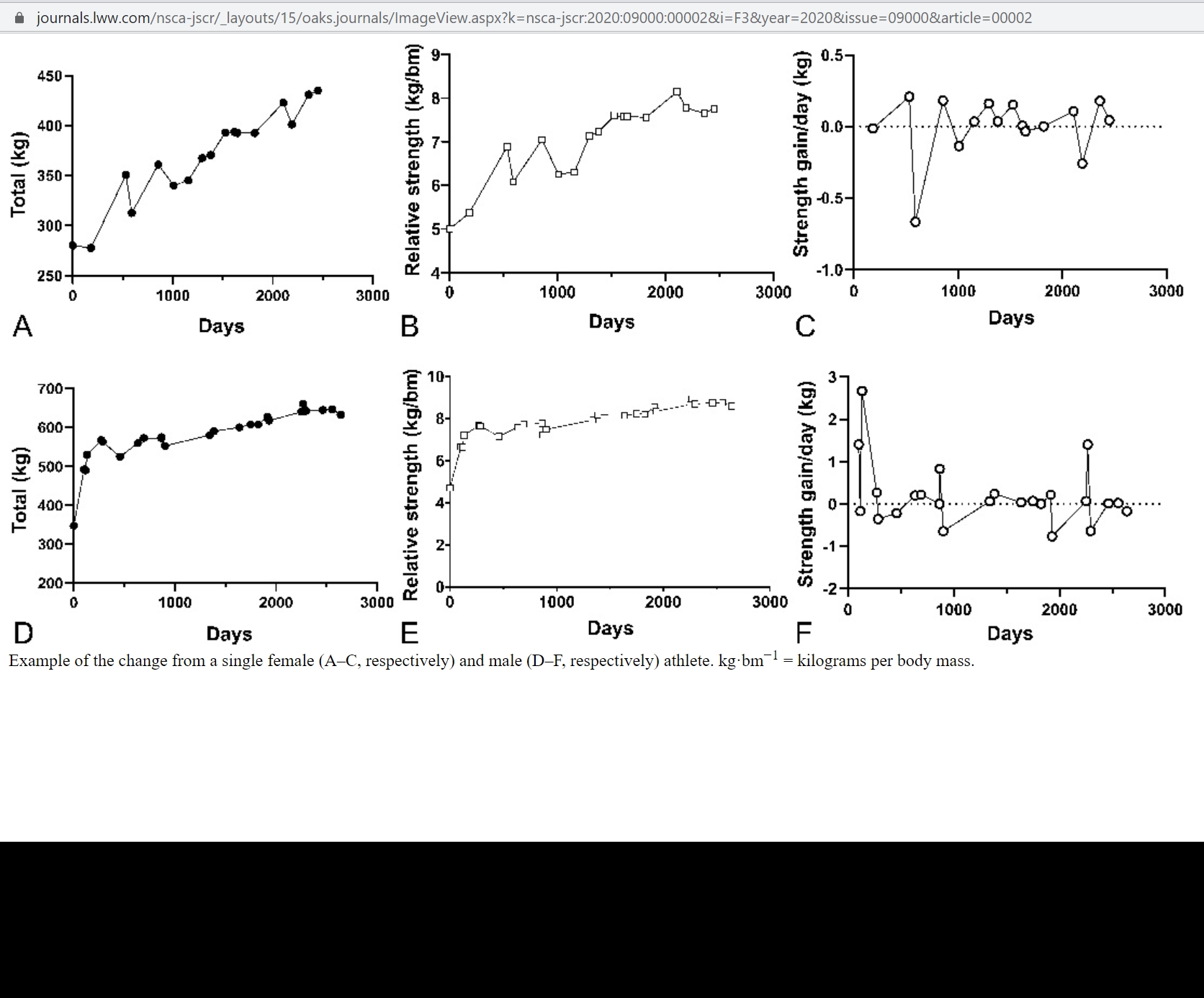Long-term strength adaptation: A 15-year analysis of powerlifting athletes.
J Strength Cond Res 34(9): 2412–2418, 2020 — Latella, C,
Strength is a fundamental component of athletic performance and development. This investigation examined the long-term strength development of powerlifting (PL) athletes. The rate of strength gain/day was assessed in 1897 PL athletes (F = 626, M = 1,271) over a 15-year period (2003–2018). Independent T-tests explored sex differences in baseline absolute (kg) and relative strength (kg·body mass−1 [bm]) recorded from the first competition, and strength gain/day (kg·d−1). Analyses based on initial strength quartiles were conducted using one-way analysis of variances with significance set at p < 0.05. Bivariate correlational analysis tested for relationships between strength gain/day and baseline strength, the number of competitions, and mean days between competitions. Males had greater absolute (M: 513.3 ± 99.8 kg, F: 289.4 ± 55.7 kg, p < 0.001) and relative (M: 5.89 ± 1.04 kg·bm−1, F: 4.27 ± 0.85 kg·bm−1, p < 0.001) strength at baseline.
Overall, strength gain/day (F: 0.12 ± 0.69 kg·d−1, M: 0.15 ± 0.44 kg·d−1, p = 0.318) was similar between sexes. However, the strongest males showed a lower rate of strength improvement (0.102 kg·d−1) compared with least strong males (0.211 kg·d−1), p = 0.010. No differences were observed across quartiles for females. Correlational analyses revealed significant but weak negative relationships between strength gain/day and the mean days between competitions for females (r2 = −0.120, p = 0.003) and males (r2 = −0.190, p < 0.001). Similar relationships were observed for baseline strength (r2 = −0.073, p = 0.009) and the number of competitions (r2 = −0.111, p < 0.001) for males.
The results suggest similar strength adaptation between sexes. The strongest males improve more slowly, possibly due to a ceiling effect. Collectively, the findings provide novel evidence of real-world long-term strength adaptations that may be particularly useful to understand athlete development, to aid periodized programming, and to benchmark strength over time.














